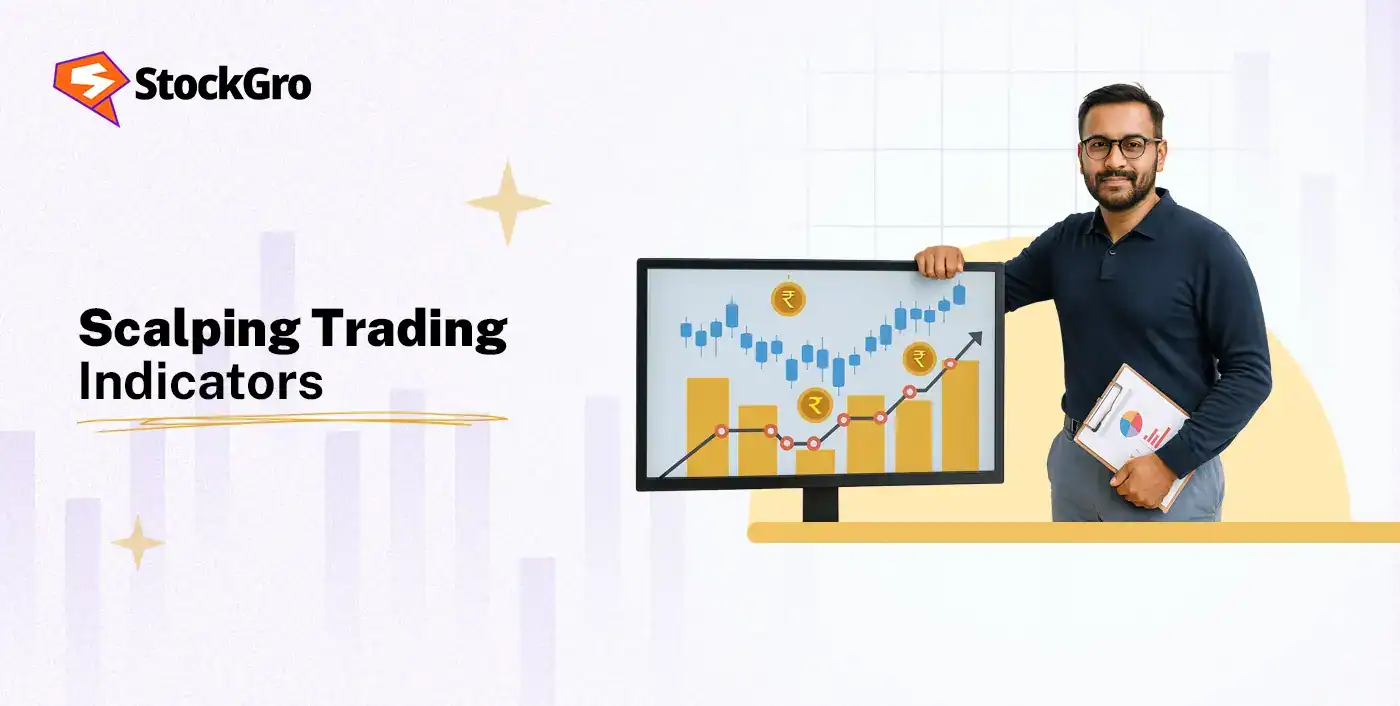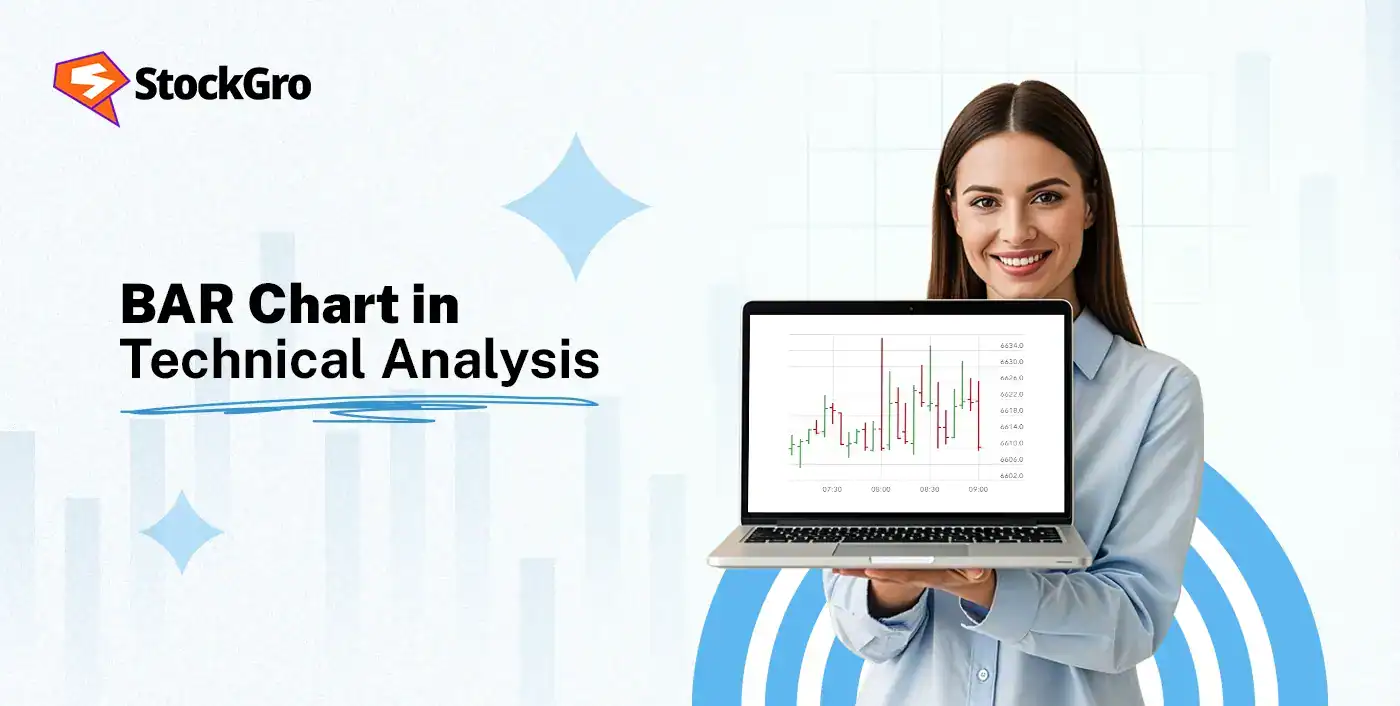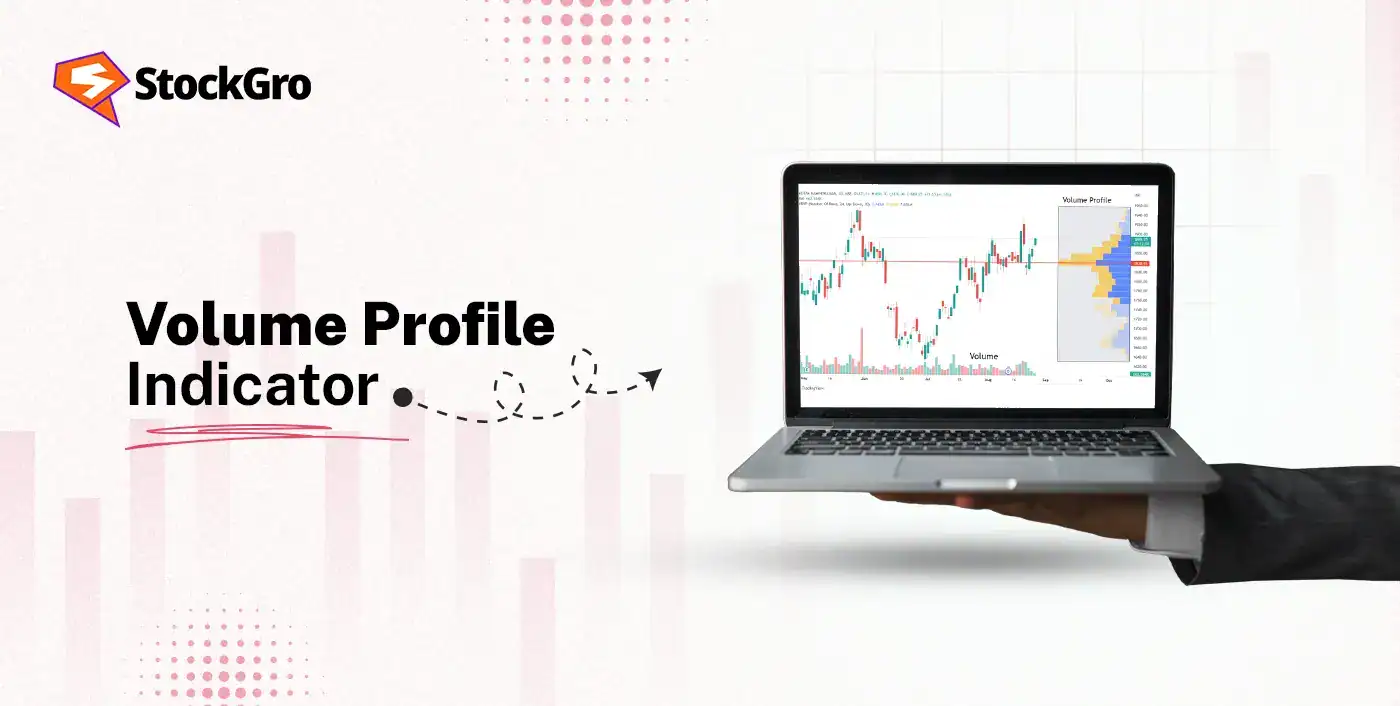
Scalping happens in the blink of an eye, and second opportunities from the market are rare. That’s where the scalping trading indicators come in to simplify the chaos and reveal what price is actually trying to do beneath all the rapid fluctuations.
By tracking trend direction, intraday strength, and momentum bursts, these indicators turn low-timeframe noise into readable structure, making quick trades clearer and more controlled. And, using the right set of indicators for scalping isn’t just about convenience, but about staying disciplined in a space where hesitation costs money.
Read this guide to know the best scalping trading indicators, how each one signals trend, momentum, or volatility, and the best indicator combinations to time fast entries and exits.
What is scalping in trading?
Scalping in trading is a fast-paced trading style that focuses on generating small but frequent profits from minor price fluctuations which involves holding positions just for seconds or minutes.
The traders aim to accumulate profits from a high volume of small trades, rather than waiting for large price swings, which requires faster decision-making ability, a high degree of discipline, and a strict risk management plan.
Why indicators matter in scalping
- Speedy decision-making: The indicators used for scalping provide clear and actionable signals that help the scalpers in making fast decisions in a market that moves very quickly.
- Trend identification: The indicators, like moving averages, help the scalpers to quickly determine the short-term trend direction, which allows them to align their trades with the market’s movement.
- Precise entry and exit points: The scalping indicators pinpoint moments to enter and exit the trades, which helps in capturing small profits while minimising losses.
Best indicators for scalping
Here are some of the highly effective indicators for scalpings, which provide insights into momentum, trend direction, and volatility, for the fast-paced nature of scalping.
1: EMA (9/20) — Trend direction filter
The 9-period and 20-period Exponential Moving Averages (EMAs) react to the recent price changes, which make them optimal for identifying short-term trends.
A buy signal is indicated when the shorter-term, 9-period Exponential Moving Average (EMA) crosses above the longer-term, 20-period EMA, and when the 9-period EMA crosses below the 20-period EMA, a sell signal takes place. This may also indicate the strength of the new trend.
2: VWAP — Intraday strength / weakness zones
The Volume Weighted Average Price (VWAP) line represents the average price of an asset at which it is traded for the day, weighted by its volume. The VWAP strategy acts as a support or resistance level and a fair value benchmark. When the price is over the VWAP, it suggests a bullish intraday trend, and when the price is under the VWAP, it suggests a bearish intraday trend.
3: MACD (fast momentum shifts for scalping)
The Moving Average Convergence Divergence (MACD) is a momentum indicator, which is used to identify changes in momentum and trend changes. In case of scalping, the traders might look for fast momentum shifts as the MACD line crosses above or below the signal line, or as the histogram moves above or below the zero line.
4: RSI (overbought/oversold + divergence)
The Relative Strength Index (RSI) is a momentum oscillator that fluctuates within 0 to 100, where the readings over 70 represent the overbought conditions and the readings under 30 represent oversold conditions.
The scalpers use RSI to identify reversals and to look for divergences between the RSI and the price action, which signal a weakening trend. The traders might use a shorter period setting, for example, 7 or 9 instead of the standard 14, to get faster signals.
5: Supertrend (quick buy/sell signals)
The Supertrend indicator is a tool that helps in identifying market trends, while providing buy or sell signals on a price chart. It uses average true range (ATR) to determine trend direction and provide clear buy or sell signals as a trailing stop-loss line.
When the line appears below the price during an uptrend, it indicates a buy signal, and when the line appears above the price during a downtrend, it indicates a sell signal.
6: Volume Profile / Volume Spike
The volume analysis is an important indicator for confirming the strength behind the price movements. The signal gains reliability when the reversal candle and a volume spike on a breakout is included. The volume profile helps in identifying the high-volume nodes (HVNs) and low-volume nodes (LVNs), which act as support and resistance areas.
7: ATR — Stop-loss sizing for scalping
The Average True Range (ATR) is a measure of market volatility. In scalping, where positions are held for very short periods, the ATR helps in setting appropriate and tight stop-loss orders based on the current volatility rather than an arbitrary stop loss, which is a predetermined price at which a trader automatically exits a position to limit losses.
Best scalping indicator combinations
The following scalping indicator combinations are considered to be effective for short-term market conditions, particularly on 1-minute to 5-minute charts.
1: EMA + VWAP scalp setup (5m chart)
The EMAs help you see the short-term trend. When the 8 EMA is above the 13, and the 13 is above the 21, the market is usually trending up. When this order flips, the trend is usually down. The VWAP serves as an intraday for fair value. If the price stays above VWAP, buyers are in control, suggesting bullish strength, and if it stays below VWAP, sellers have the upper hand, suggesting bearish strength.
The scalpers might wait for a pullback to the fast EMA, say the 8 EMA, that holds, while the overall EMA stack and the price’s position relative to the VWAP confirm the trend direction. The volume confirmation, for example, a volume spike above the average, strengthens the signal. The traders might place a tight stop-loss based on the recent price action or an Average True Range (ATR) multiple.
2: MACD + RSI quick reversal setup
In this combination, the RSI measures the overbought/oversold conditions, above 70 and below 30, while the MACD measures the relationship between two moving averages to confirm momentum.
The traders usually look for a price divergence with the RSI, where the price makes a new high-low, but RSI establishes a lower high-higher low, indicating a weakening trend. The MACD can provide a crossover signal as a confirmation of the momentum shift and an entry signal.
The scalpers might exit when the indicators show momentum reversal or when the price hits a predefined support-resistance level, and use a tight stop-loss just beyond the recent swing point or the confirmation candle.
3: Supertrend + ATR stop loss automation
The Supertrend line provides real-time buy and sell signals by flipping above or below the price. The ATR measures market volatility, which is used to calculate stop-loss distances. This combination adapts to the changing market conditions, which allows wider stops in volatile markets and tighter stops in calm ones.
The traders might enter a long position when the Supertrend changes to buy or flips below the price, and a short position when it changes to sell or flips above the price.
The stop-loss is automatically set at a multiple of the ATR, for example, 1x ATR distance from the entry price, and the position is exited when the price crosses the Supertrend line.
Best timeframes for scalping (5m/3m/1m explained)
Here are the timeframes scalpers might use to determine the overall trend and precise entry and exit points.
| Timeframe | Best for |
| 1-minute | It helps in timing precise entries and exits, while capturing the smallest price movements, and high-frequency trading. It may contain noise and false signals, and is more suitable for experienced traders. |
| 3-minute | It is a balance between the speed of the 1m chart and the stability of the 5m chart, and offers more setups than the 5m but less noise than the 1m. |
| 5-minute | It identifies short-term momentum, support-resistance levels, and market structure, and provides clearer signals than the 1-minute and 3-minute charts. |
Mistakes to avoid
- Overtrading: If the traders make too many trades, it increases transaction costs, which might lead to mental burnout, reducing the quality of decisions. So, they shall rather focus more on high-probability setups.
- Poor risk management: This might include failure in setting stop-loss orders, taking high risk on a single trade, or widening stop-losses out of hope. That’s why a proper risk management plan is important for preserving capital.
- Ignoring market conditions: The scalpers should be adaptable and recognise when the market conditions shift. If they trade illiquid assets or during periods of low volatility, it can be a mistake.
- Lack of preparation & Emotional trading: If the traders trade without a clear plan or understanding, and make decisions based on fear or greed, such as chasing losses or revenge trading, it can lead to poor trades and significant losses.
Summary
In trading, scalping mostly depends on quick entries and exits, so the traders need to use fast indicators to read short-term trend, momentum, and volatility. The indicators like EMA, VWAP, MACD, RSI, Supertrend, Volume, and ATR help in identifying trend direction, fair value, reversals, and safe stop-loss levels.
When these indicators are combined well, such as EMA+VWAP for trend scalps or MACD+RSI for reversals, these can filter noise and highlight high-probability setups. By having a strong sense of discipline, tight stops, and awareness of market conditions, the scalpers can stay consistent in fast-moving charts.
FAQ‘s
There is no single indicator that is best for every scalper. However, EMAs and VWAP are mostly used because they show the short-term trend and intraday strength clearly. The scalpers combine them with momentum tools like MACD or RSI for further confirmation.
The 1-minute, 3-minute, and 5-minute charts are the common timeframes used in the case of scalping. The 1m gives more setups, but more noise, the 3m offers balance, and the 5m provides clearer structure with fewer false signals.
The EMA and VWAP both have different roles in scalping. The EMAs show short-term trend direction, while the VWAP shows intraday fair value and strength. The scalpers might use them together for a stronger confirmation.
Yes, a shorter-period RSI helps in identifying quick overbought or oversold swings and spot divergences that hint at short-term reversals. It usually works best with another momentum or trend indicator.
A scalping strategy uses EMAs or VWAP for trend direction and MACD or RSI for momentum confirmation. The high-probability scalps usually come from trading with the trend, not against it.
Yes, scalping is possible without indicators, but it requires strong price-action skills. The traders rely on candlestick patterns, support-resistance levels, liquidity zones, and tape reading. The indicators usually make decision-making faster and clearer.
Scalpers might lose most of their money due to overtrading, poor risk control, emotional decisions, and trading in low-volatility conditions. The losses usually add up quickly in the fast markets without strict discipline, tight stops, and a defined strategy.

